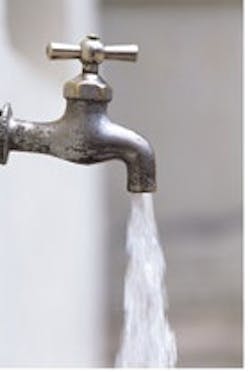PA DEP Secretary: New Wastewater Treatment Standards for TDS Now in Effect, Enforceable
New wastewater treatment standards for total dissolved solids, which will apply to gas well drilling wastewater, and that protect aquatic life and drinking water supplies, are now in effect and enforceable, Environmental Protection Secretary John Hanger announced.
The combination of this Total Dissolved Solids (TDS) Rule and the new rule requiring 150-ft buffers for Pennsylvania's approximately 20,000 miles of high-quality streams give waters in the state the strongest legal protection in history.
The new permitted limit for discharges of wastewater from gas drilling is 500 mg/L of total dissolved solids and 250 mg/L for chlorides. All new and expanding facilities that treat gas well wastewater must now meet these discharge limits.
"DEP's proposal of these new limits has already driven industry investment in new technologies to treat this wastewater which is high in TDS," Hanger said. "We are proving that if we hold the environmental bar high, the industry can and will rise to meet Pennsylvania's expectations."
Hanger added that since the Department of Environmental Protection proposed these new rules, some businesses have moved to treat gas well wastewater for recycling by the natural gas industry rather than discharging it to Pennsylvania waterways.
Using a watershed-based approach, the new regulations will also govern other discharges of TDS. This approach will ensure that the level of TDS in streams in the state will not reach levels that will negatively impact downstream users such as drinking water suppliers.
Pennsylvania's streams receive TDS from a variety of wastewater sources. Primary sources of these pollutants are storm water runoff and discharges from coal mines and other industrial activities. Wastewater from certain industrial operations is high in chlorides (salt) and sulfates, which affect the taste and odor of drinking water and, in high concentrations, can damage or destroy aquatic life. Drinking water treatment facilities are not equipped to treat these contaminants and rely on normally low levels of chlorides and sulfates in surface waters used for drinking water supplies.
The new rules underwent the regulatory process that included public input; review by the Environmental Quality Board; regulatory review by the Independent Regulatory Review Commission; legislative review through the House and Senate Standing Energy and Environmental Resources Committees; and review by the state Attorney General for form and legality.
Source: PA DEP
